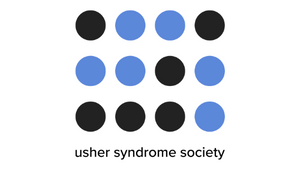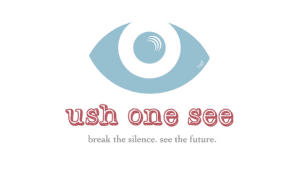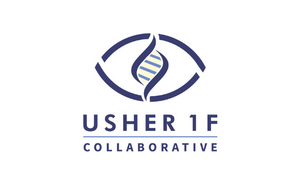The latest USH blog posts and various news items impacting the Usher syndrome community.
The Usher Syndrome Coalition is proud to announce a partnership with Eli Lilly and Company (Lilly) and Akouos, a hearing research company, to support clinical trial enrollment for a potential therapy for USH3A-related hearing loss.
The RUSH2A Natural History Study follows people with USH2A-related Usher syndrome type 2A or non-syndromic RP to understand how their vision changes over time. After four years of data from more than 100 participants, the Foundation Fighting Blindness is sharing the information publicly to support better clinical trials and new treatments. The nine-year study uses consistent vision tests and has already produced important findings that will help guide future therapies for the Usher syndrome community.
Nanoscope Therapeutics has started the FDA review process for MCO-010, a new treatment that could help people with retinitis pigmentosa and Usher syndrome see light and shapes again. In studies, people kept their vision improvements for up to three years after just one injection, with no serious side effects. Because MCO-010 doesn’t focus on a single gene, it may also help people with other eye conditions like Stargardt disease.
The U.S. Department of Education has made deep staff cuts in the offices that help schools support children with disabilities, including kids with Usher syndrome.
Both as a nurse and as a person living with Usher syndrome, Meagan wants to empower you to be the expert on your own condition. Fiercely share with your care team, your community, and your family what being well and healthy looks like for you.
New ICD-10-CM codes for Usher syndrome take effect October 1, 2025, improving diagnosis, care, insurance, and research for the USH community.
A recap of the 2025 Usher Syndrome Awareness Day, honoring our global community that educates, advocates, and supports one another. This is a day to celebrate connection, raise awareness, and fuel hope for treatments.
Nacuity Pharmaceuticals has shared exciting news about a potential new treatment for people with Usher syndrome. They tested an antioxidant tablet called NPI-001 to see if it could slow down vision loss.
The Usher Syndrome Coalition urges the continuation of funding for four State DeafBlind Projects recently notified that their support will end.
jCyte published Phase I/IIa results from its first major clinical study, which tested its cell-based therapy, called jCell. This therapy uses special “retinal progenitor cells” that are placed into the eye with a small injection.
First-time USH Champion shares personal experience advocating for $50 million in Usher syndrome research funding on Capitol Hill.
Learn how hearing health impacts well-being for people with Usher syndrome. Discover the importance of regular hearing tests, proper maintenance of assistive hearing equipment, and hearing health awareness improve communication, safety, and quality of life.
Summary of research updates for each Usher syndrome type at ARVO 2025.
Psychotherapist and Usher syndrome advocate Rebecca Alexander shares her deeply personal journey with diagnosis, grief, and resilience. Rebecca offers insights and tools for navigating the emotional complexity of progressive vision and hearing loss.
Urge your Members of Congress to protect vision loss research and newborn hearing screenings. Congress is making big funding decisions that will impact the Usher syndrome community.
Therapist and disability advocate Becca Brown explores the impact of internalized ableism, the power of self-advocacy, and the importance of mental health support for those navigating Usher syndrome and other disabilities.
Rare Genes transforms a medical diagnosis into a movement, redefining what it means to be rare. Your Rare Genes connect you to a global network.
Scientists are working on new gene therapies for Usher syndrome, including Type 1B (USH1B). This condition is caused by changes (mutations) in the MYO7A gene. Here, we will dive into two companies that have active USH1B programs.
Cells have a protective outer layer called the cell membrane, which can make it hard for gene therapies to get inside. To fix this, scientists put gene therapies into a special carrier that keeps them safe, helps them travel to the right cells, and allows them to enter the cells to do their job.
Scientists at the NIH have developed new eye drops that may slow vision loss in diseases like retinitis pigmentosa (RP). The drops use small pieces of a natural protein called PEDF, which protects the retina—the part of the eye that helps us see.
Some inherited eye diseases, like Usher syndrome and retinitis pigmentosa, cause vision loss over time. Last week, we talked about how gene therapies can help photoreceptor cells make important proteins again. However, for these treatments to work, we need to get the gene therapy to the right place in the eye. How is this done?
Living with Usher syndrome presents daily challenges, but as Molly Watt shares in this patient perspective featured by MedJournal 360, it also fosters remarkable resilience.
Scientists are making tremendous progress using gene therapy to treat inherited eye diseases like Usher syndrome and retinitis pigmentosa. In this series, we will explore gene therapy—what it is, how it works, and how it is given to patients.
Regeneron gene therapy improves hearing in 10 children with rare form of hearing loss.
As government and NIH funding decisions unfold, we remain committed to advocating for continued progress in research efforts that are critical to our community.







